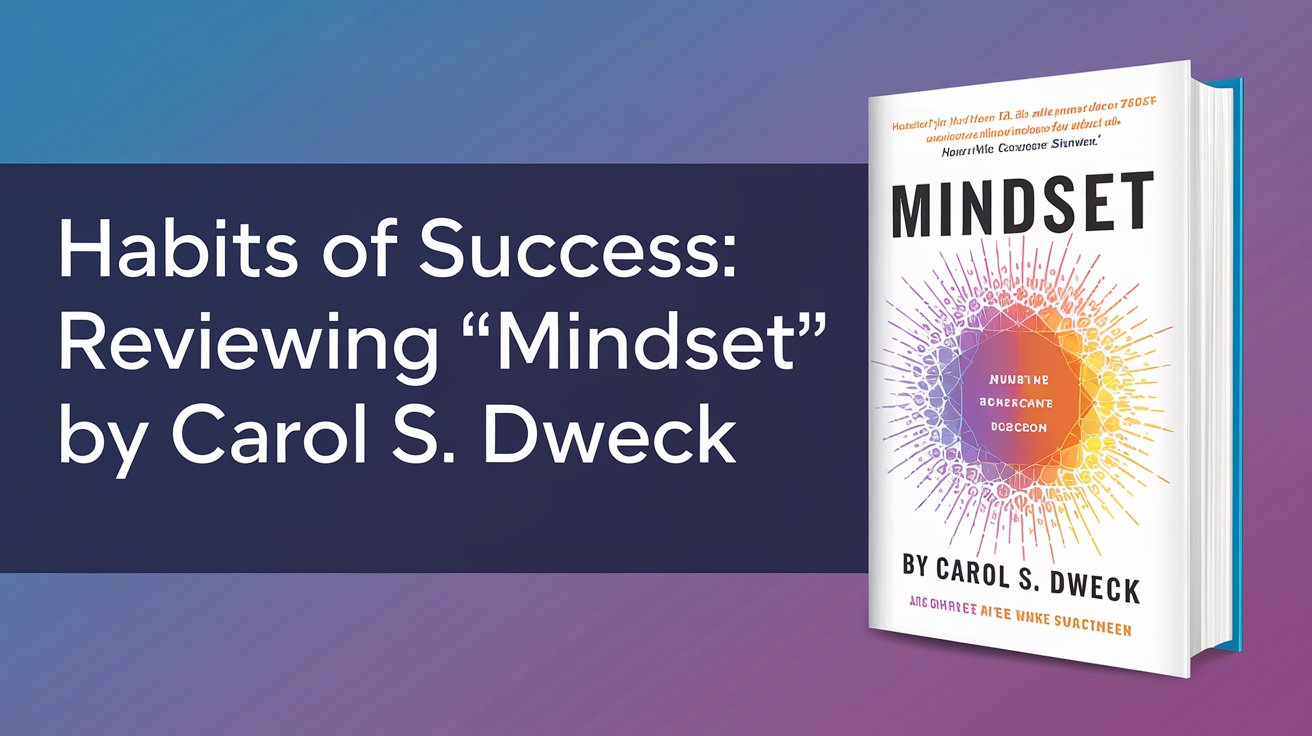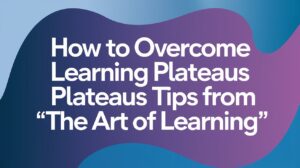This simple idea is right at the very core of Carol S. Dweck’s immensely important book, a work entitled Mindset: The New Psychology of Success-it’s the mindset that shapes the way we lead our lives, face challenges, and grow. This book became a staple to be taken through by anyone interested in personal development, education, and business leadership. The book conveys deep insights into how changing the way we think will unlock our potential.
This summary covers the main ideas in Mindset, the lessons derived thereof, notable quotes, and actionable steps on how one can implement the message into daily life for heightened success.
Overview of Mindset by Carol S. Dweck
In essence, Mindset rests on two contrasting mindsets: the fixed mindset and the growth mindset.
- Fixed Mindset: Individuals possessing a fixed mindset believe that their qualities, such as intelligence and talents, are just traits; thus, they must be fixed. They avoid challenges, feel threatened by the success of others, and readily give up when faced with defeating situations. This belief system hampers growth because it is anchored on the assumption that effort will not change outcomes.
- Growth Mindsets: An individual with a growth mindset thinks that his or her abilities can be developed through hard work, dedication, and learning. He embraces challenges, is more determined by setbacks, and is inspired by others’ successes. This kind of thinking promotes resiliency, love for learning, and belief in the concept of continuous improvement.
The book explores the idea of how the growth mindset can lead one to success in virtually any area of life, be it relationships, career, or education. Dweck illustrates, through extensive research and real-life examples, how a shift in one’s thinking can result in remarkable changes in better performance, creativity, and fulfillment.
Key Lessons from Mindset
1. The Power of Perception
The most primary lesson one draws from reading Mindset is that perception begets reality. The way you view yourself and your capabilities relates directly with accomplishments. Dweck goes through several case studies and examples, including athletes, students, and business leaders, who prospered when they embraced a growth mindset.
Because, according to Dweck, a fixed mindset often instills a fear of failure, it is a barrier to further improvement. For a growth mindset, on the other hand, failure is part of the learning curve. Individuals with a growth mindset view challenges as opportunities to develop their capabilities further, and such a pathway paves the way for long-term success.
2. Embracing Challenges
p until now, she points out quite importantly how people view challenges: some try to avoid them at all cost, while others love to take them heads-on. In growth mindset, the person puts in efforts as a necessary step toward mastery. Fixed mindset people typically view challenges as threatening because they belief failure will unmask their deficiencies.
The growth mindset individual sees challenges as opportunities for improvement. They know that to achieve anything worthwhile, one needs effort and persistence. In such a belief, resilience is cultivated, which definitely is an important characteristic to possess in today’s fast-moving and highly unpredictable world.
3. The Importance of Effort
Perhaps the most empowering message that can be taken from Mindset is the notion that effort trumps talent. As Dweck makes crystal clear, while some type of innate talent may take one a distance, it is sustained effort that ultimately reaps success. The growth mindset democratizes success insofar as it does not depend on the abilities that one happens to possess but opens up possibilities for everybody through hard work and dedication.

This is supported by Dweck, who has researched the notion that students performed better academically when praised for their effort and not for their intelligence. What is the conclusion here? If people understand their efforts will be rewarded, they are most apt to persist through hard tasks to higher levels of achievement.
4. Learning from Failure
Perhaps one of the most liberating ideas to arise from this book is the understanding that failure is not the opposite of success-it is a part of it. Individuals who view life through a fixed mindset usually will not engage in any activity where they might fail because, to them, failure equates to a deficiency in intelligence or ability. It stales them from taking risks or venturing into new areas of growth.
On the other hand, the growth mindset understands that failure is an important constituent in the learning curve and one that helps people improve. They are not scared to fail because they know it gives substantial feedback. This is what keeps people making bold steps toward their goals and building resilience in the process.
5. Helping Others Develop a Growth Mindset
Dweck not only describes the personal benefit of a growth mindset but also how others could be brought up or trained to develop one. Whether you are a teacher, parent, or leader, fostering this growth mindset environment leads to dramatic improvements in outcomes.
For example, Dweck recommends that we praise effort, strategy, and persistence rather than innate ability. In this way, we are encouraging others to focus on things that are within their control-their effort and approach to problems-rather than on qualities they believe to be fixed.
Within an academic context, this is all the more crucial: students whose intelligence is praised may develop a fear of failure that will stunt their intellectual and emotional growth, while students who are praised for their effort will be more likely to engage in challenging activities out of curiosity and love for learning.
Best Line from the Book
One of the most quoted and powerful lines from Mindset goes to:
“Becoming is better than being.”
This simple yet deep statement crystallizes the growth mindset. It reminds people that life is a journey of continuous learning and self-improvement. Success should not be viewed as an end state one arrives at but a process or a journey in which growth, learning, and evolution happen over time.
From the renowned psychologist who introduced the world to “growth mindset” comes this updated edition of the million-copy bestseller—featuring transformative insights into redefining success, building lifelong resilience, and supercharging self-improvement.
“Through clever research studies and engaging writing, Dweck illuminates how our beliefs about our capabilities exert tremendous influence on how we learn and which paths we take in life.”—Bill Gates, GatesNotes
It is the process of “becoming” that allows individuals to find joy in the journey of progress, not perfection. It acts like an antidote against the fear of failure that a fixed mindset has, and that one has to be “perfect” to succeed.
Putting Mindset into Practice in Personal Life
With application of the principles of Mindset, one can cover most aspects of life-from personal development to further stages of relationships, career, and education. Now, some actionable suggestions on how to apply growth mindset in your life are discussed here:
1. Reframe Challenges as Opportunities
When you encounter a tough situation, instead of making it a hindrance, grab it as an opportunity to grow. Remind yourself that even though the immediate outcome might not be perfect, one will learn from one’s efforts.
2. Focus on Effort Rather Than Outcome
Whether this is an office project or training to complete a marathon, focus on the effort you put in and not on the result of it. In this way, you shift your focus from external validation like praise and awards to internal satisfaction by knowing you are improving.
3. Learn to Enjoy the Process
Adopt the mindset of the journey, not the destination. The setbacks that would otherwise come along the way are not excuses to quit but a part of the process. The goal is never perfection but improvement.
4. Learn to Celebrate Failures as Learning Experiences
When things don’t go as planned, other than feeling defeated, analyze what you can learn from this. Failure is feedback; once you understand this it will help you be more resilient in the future.
5. Fostering Growth in Others
Whether as a leader or mentor, provide opportunities that elicit a growth mindset through effort and persistence. Praise the process, not ability. That helps build their confidence in their capacity for improvement.
Business and Leadership Impact
The basic principles of the growth mindset introduced by Dweck really struck a chord in the business world. Leaders with a growth mindset create an environment where employees feel free of any possible fear of taking risks, making mistakes, and coming up with new ideas. This way, creativity can be fostered and long-term success can be driven within organizations.
It is only the businesses that have a growth mindset that focus on learning and development and not on maintaining the status quo. In addition, such companies reward employees for their effort and improvement, rather than only for their outcomes. This therefore fosters a culture of learning, quite critical to ensuring competitiveness within today’s fast-paced, ever-evolving marketplace.
Conclusion
ut more than a book, Carol S. Dweck’s Mindset is a philosophy of living, of working, and being with other people. Insights into the fixed versus growth mindset can be associated with profound modulations in personal accomplishment and satisfaction. Everyone can change his or her outlook toward challenges and opportunities once he or she understands that one’s intelligence or abilities are not a fixed entity but rather something that can be developed with effort and persistence.
One conclusion that may be drawn from the work of Dweck is that success is not in the abilities that we have, but rather in the growth, learning, and persistence that we make. It is not just a question of achieving success; it is a question of living a full and worthwhile life.






